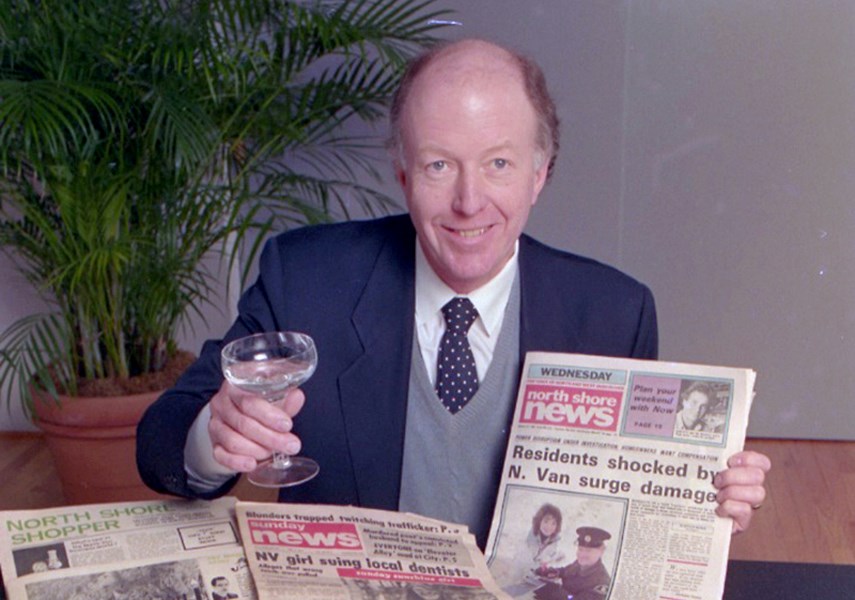It’s hard to tell of the beginning of the North Shore News without some embarrassment because the birth of this newspaper was made possible by my prior business failure. I can’t really explain it unless I tell the whole story.
For me the 1960s were more or less a disaster or– as Zorba said, I think, a calamity wrapped up in a disaster; or is it the other way around?
I was an enterprising young radiator mechanic. I worked for Carey Lockwood, of NorEst Radiators. He was a kind of father to me, and took me in as an apprentice in 1957, age 17, and taught me the radiator trade.
I married in 1961, age 21. My wife was from Lynn Valley and was 20. It now seems to me that we were so young. Everyone rushed to be engaged or married. There wasn’t the time to look around, to find out what other opportunities life offered, both in terms of career and long-term relationships. We seemed to think that this is what you did; you got married as soon as you could and had children, and somehow this is how you found yourself and got happy. It may be true, but these days my children are grown up and the patter of little feet in my home is rare. I live with my dogs now. I joke that if I had only started with dogs instead of children and realized how much easier dogs were I might never got around to having children. Just a joke. I love my kids and grandkids.
I quit my employer and went out on my own in the auto radiator trade. I was 22 . I knew nothing of real budgeting and very little about a lot else. And I had no money.
To make a long story short, my small proprietorship was a calamity inside a disaster, which was my marriage.
Too much of my cash and time went to the Avalon Hotel, or the Olympic, or the St. Alice. Entirely too much beer or whatever. It’s easy to pick out some of my mistakes in retrospect.
I didn’t charge enough, was loose with my cash, didn’t promote enough, had no working capital to start with, and most importantly, was afraid to let my guard down and ask for advice.
I didn’t have a budget. And drank and came home late sometimes.
The result was that I didn’t do a good job of providing for my little family. I was neither a good provider nor a good enough husband or caregiver or father, and I lost them for a long time and missed them a lot.
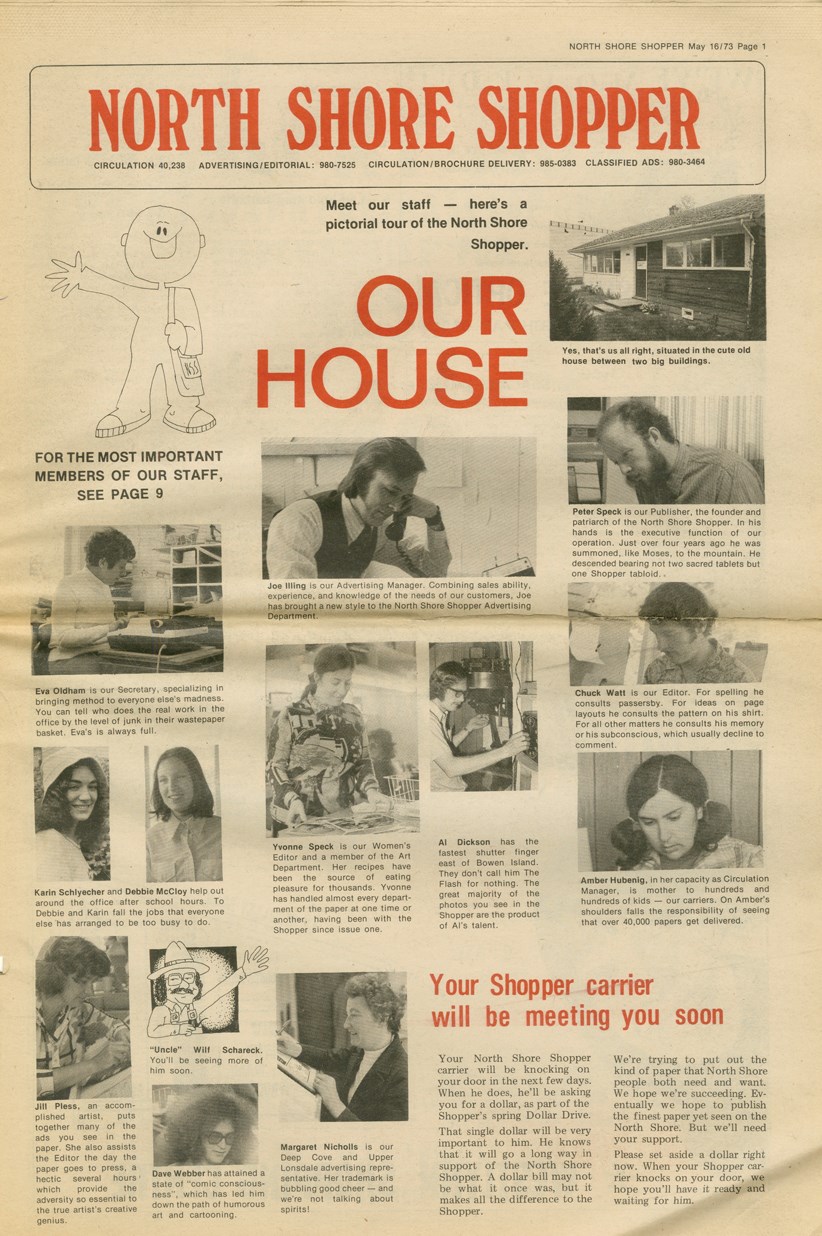
Sardines and cement plants
By 1966 my first marriage and my business were both over. I had been dimly aware of the possibility of bankruptcy from Day 1 of my radiator shop. No capital meant Damocles’ sword was hanging over my head and the pressure from creditors was uninterrupted toward the end. I went into the trustee’s office with fear and dread, and emerged feeling so incredibly light. It felt as if my shoes didn’t touch the floor. I had about $1,200 bucks left over after the bankruptcy. That let me rent a tiny two-room suite in the Capilano Highlands and pay my rent for a few months.
I am a North Shore person, though born in Montreal. I’ve lived all of my life here. And I love the place. My father was a West Van resident. Born in England, he came to Canada at age eight and lived with his parents in one of the West Van houses they rented from 1911. He got a degree in pharmacy, became a drug salesman and travelled across the country from coast to coast by rail, peddling his products. My mother was from Montreal and very French.
How and why they got together is a mystery but they did, and my late sister and I were a result.
The two of them were not a good match, there was much bickering over my father’s drinking, and money and other things, and they split up after my sister’s birth, 1942 or so. In 1947 mother brought us (mainly French speaking) children to West Van at my father’s pleadings. We ended up living in a beachfront cottage at 27th and Bellevue, which made quite an impression on this seven-year-old. I went to Pauline Johnson, which was not French immersion, as it is now.
(By the way, more to demonstrate inflation than to mourn, the cottage came for sale in 1950. It was offered to my parents for $4,900. Same lot now? Ten to $15 million.) My parents opted instead to buy a Norgate Park rancher for $7,800. My mother said she didn’t want to deal with any more rats, and besides, everyone knew that you got rheumatism if you lived too close to the sea.
I guess the point of telling this is that there was no other place than the North Shore to run away to, for me.
Bankruptcy notices appeared. I couldn’t hide. But really, nobody really cared. Except my ex-wife’s uncle, Jim Bezanson, who got stiffed for ten grand, and he never said a word about it until my discharge came and I was able to repay him. It took me about 10 years.
The three years after I went broke were pretty exciting, to put a happy face on what was a grim daily struggle, a hand-to-mouth existence.
I swept chimneys, dug ditches, cleaned oil stoves, cut firewood, dismantled old vehicles, worked on a sewer crew in the British Properties, lived for a few months in a construction camp in Powell River and did ironworker jobs in a cement plant, in Delta. That’s just what I can remember. I did a lot of looking for work.
The grub in the Powell River camp was fantastic and I was sorry when that job ended. I went back to looking for work every day, but as they say: sometimes chicken, sometimes just feathers.
The hand didn’t always get to the mouth fast enough and I lost 40 pounds in the first year. It was a good thing, diet wise, but harsh and of course there was no money for beer. I remember a week where my entire diet was a can of sardines, a sleeve of crackers and half a jar of peanut butter. I ate my meagre provisions with a small spoon and was grateful for them.
No money ain’t funny
In 1968, tired of the day labouring lifestyle, I asked a friend what else a person could do for a living that involved some creativity. He said “Do you think you could sell advertising?” and directed me to the Lions Gate Times weekly newspaper in West Vancouver, at 16th and Bellevue where I met and was hired (straight commission only) by Claude Hoodspith, the owner and publisher.
There were two weekly newspapers on the North Shore at that time: the Times, of West Vancouver, which had about 6,000 paid subscribers, and the Citizen, in North Van, with about 14,000 paid. There were about 45,000 addresses on the North Shore, and an advertiser in both papers could not reach half the community. Claude exploited this by publishing a yearly “progress edition,” which was to be distributed to all North Shore addresses, and my job was to sell the ad content to businesses.
I learned the newspaper business quickly at a time when printing technology was striding ahead after several centuries of lead type.
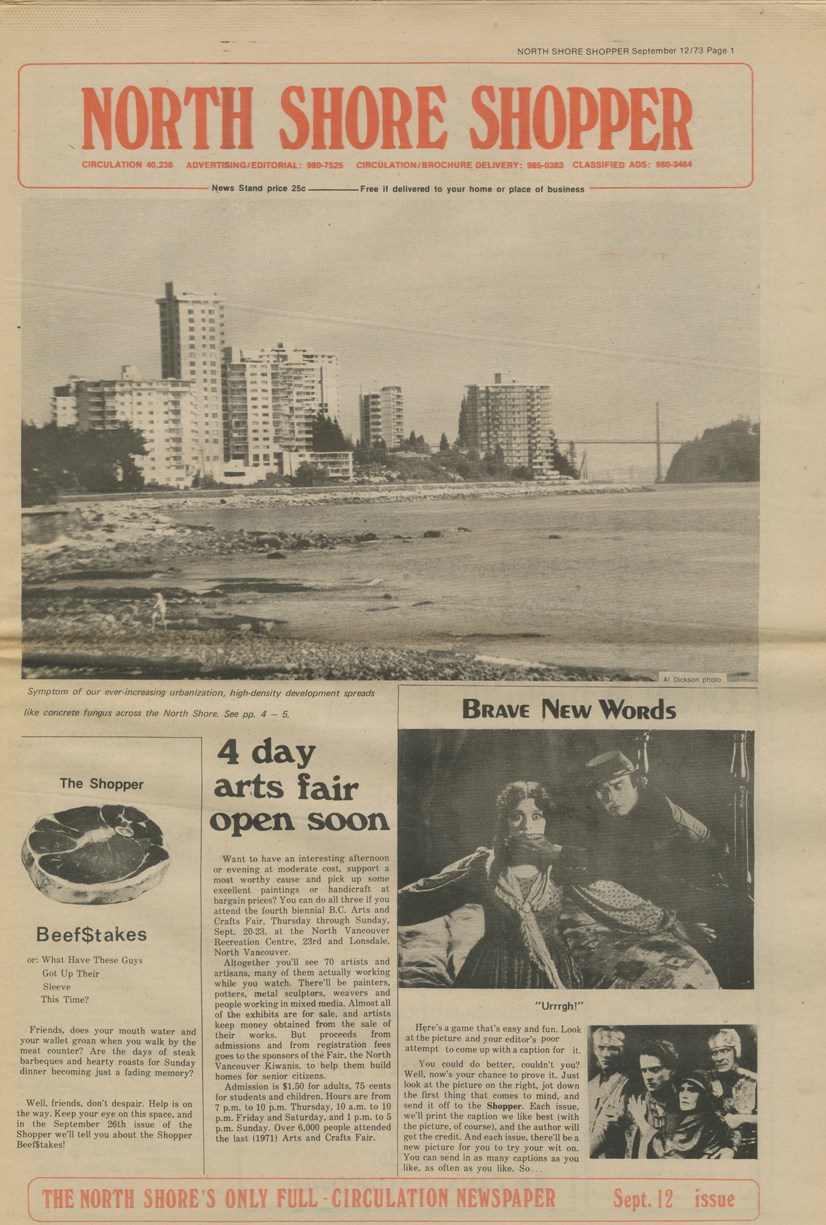
The Times, under the guidance of Joe Oetter, their printing foreman, had a foot in the past with a functioning linotype machine; a hot lead machine dating way back, used much like a typewriter but casting in hot lead the body type; racks of old-style movable type for headlines, and new typesetting machinery that printed the new cold-set type that was taking over so fast. They didn’t use the linotype much anymore but I saw it working once or twice.
The Progress edition went pretty well. I loved the new life. My tongue-in-cheek motto to myself on hard days was “Well, I am clean, dry, and mostly indoors,” which was a refreshing change from my most recent employments.
Being new to the ad sales business, I had no preconceptions. I did a lot of my selling on the phone and didn’t make too many basic mistakes.
I learned quickly. The Times employed a crusty Brit as editor. On production nights Sandy Sanderson would send me out for a case of India Pale Ale and I assisted and observed. Claude appeared pleased, so much so that he told me I was making too much money and put me on a modest salary.
My motivation took a serious dive and I parted company with Claude. I took my parting paycheque just before Christmas 1968 and went home and considered my future. But sulking doesn’t pay for rent and groceries. I remembered that the prospective advertisers I had been talking to over the couple of months were more interested in the whole North Shore. I began to consider a total market coverage advertising vehicle, and went back to Claude to ask him if he would like to do it.
He declined. I resumed sulking. My money ran out completely after Christmas. I pondered that paid circulation papers could not net all that much after all the costs involved: churn, distribution, bundle delivery, supervision and the like. My guess was that the circulation revenue was not that relevant and the draw to advertisers was more in the assumption that readers were more likely to be influenced if they paid for the paper. My feeling was that I didn’t need that, and if I could put a good-looking paper on every doorstep, then people would read it – whether they paid for it or not. And, thank God, they do.
To prove that was quite an issue. I got a map and began to total up the post office routes in the Capilano Highlands where I was then living. There were then about 6,000 residential and business addresses. I found a printer, got a quote for a 6,000-run tabloid-size newspaper, and found an advertising distribution company and got a quote for distribution in the Capilano Highlands area. Then I hemmed and hawed.
When you’re really out of money there is a lot of friction. Everything is difficult. A few litres of gas can be a big obstacle. If you don’t have the dollars, things can be done; but it is very hard at times. Having to buy a car battery can be a big blow to a hand-to-mouth person.
The great Spirit came to me, one evening, when I was sitting on the hearth at home, at the end of a long day. I was daydreaming of owning a waterfront farm, a dream since teenage years, and a kind voice told me to follow my dream, and there was no one else in the room.
One frosty January morning, early 1969, my significant other, on her way to her job at Eaton’s, gave me 50 cents and told me that she thought I had nothing to lose by trying. It was very reassuring. I was down but not out. And what did I have to lose if the adventure failed? By this time, not much. I put together a crude dummy issue, using the kids’ felt pens. With the money she gave me I bought an invoice book from McGill stationery on Edgemont Boulevard. And that moment might have been the real start of the North Shore News.
Following the dream
With a burst of new energy, I canvassed every prospective advertiser that was reachable in the Highlands area. Dry cleaners, furniture stores, garages, I knew them all by the time the pages were sold. I didn’t take any money up front, but told them that this was an effort that might not pan out, and if it did succeed I would bring the proof of publication with me and collect from them. In the interim, I asked them to sign an invoice in my book, telling them quite truthfully that there was not much chance of me getting this thing off the ground if they didn’t. By the time the 16 pages were sold I had rolled over a lot of rocks looking for crabs, so to speak. My only pair of street shoes were worn out. An advertiser, Barry Innes, who had a firm called Savon Furniture, reminded me years later that I sat in his office and cut out new cardboard insoles for my leaking shoes while we talked.
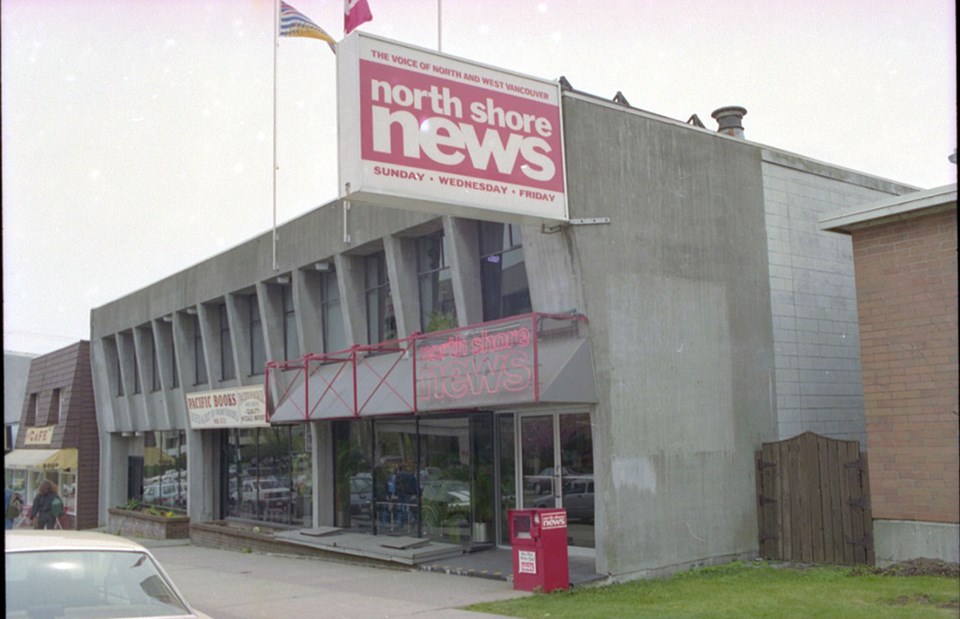
But the big day finally came. And I kept selling, but it was to banks this time, to get enough dough to put it together.
Each time I talked to a banker, after my preamble, an up-front disclosure of my discharged bankruptcy and other chit chat, I put the battered invoice book on his desk, and told my story using the same dummy that was toted on my rounds.
Turned down three or four times, I decided to change my approach and met with a Royal Bank manager in West Van.
This time I kept the book in my pocket and laid out my idea to him as a hypothetical future prospect, and asked him to lend me the money to make it happen. Of course he wouldn’t.
Then, I asked, what about if I went to every one of these advertisers and got a signed invoice? “Well, in that case ... maybe 50/50.” I put the book on the desk. He looked through it and frowned. “You tricked me” he said. But he lent me the 50 per cent, about $2,500, and that was just enough. I bought a proper glue pot, rented an IBM Selectric typewriter, bought some pages of Letraset, and off we went, a many-hour marathon of cutting and pasting, using Letraset headlines and improvised typesetting. Off to the printers and the next morning it was in print and the bundles were in the distributors’ trucks. It was a crude little thing with almost no news content, but mine own, as they say. I called it the North Shore Shopper.
After the distribution, I collected from the advertisers and paid off the bank. There was enough money left to buy me another pair of shoes, a car full of groceries, and a bottle of Scotch. I repeated the feat in another area. By turns, monthly, I did all the other areas, north of the highway, south of it, east of Lonsdale, west of Lonsdale, and West Van.
Business grew. As soon as I could I put the newspaper into total market coverage. It became obvious to me that the advertisers wanted it.
It was relatively easy to put the existing advertisers into one publication, but getting it to the readers was quite another matter.
Every door on the shore
Distribution was always a headache. The commercial advertising distributors, who used panel trucks to move their crew from place to place, missed a lot of addresses; it was very difficult to convince a merchant when he didn’t get the paper at home, or when it wasn’t delivered to his mother-in-law. We began to organize our own distribution system covering the entire North Shore. It’s easy to say, but it took years to do, with about 400 carriers and about 40 zone managers. As we progressed in our small revenues it became possible for my significant other to stay home and try to organize a growing army of routes and carriers. My sister Dede, a master of detail, took on the mapping tasks, creating maps for every carrier route. We ended up with the North Shore divided into several zones, each zone with specific maps.
Rome was not built in a day. It took ages to build our carrier network. We had to get real to hire carriers. It is hard to persuade a relatively well-off person, young or old, to trudge around with a gauche canvas newspaper bag unless you pay them well. That is still the case, apparently, and a further reflection of our communities is that nowadays it’s hard to find people to work who can live here, not just newspaper carriers, but waitresses, store clerks, carpenters and cleaners. I don’t know what the News experiences now but I would hazard that adults, with or without cars, are a big part of distribution. There just aren’t that many children around in our community, which has areas of the mainly elderly that seldom see kids.
I kept on trying to hire the right people, mostly sales people. I called myself in my mind Chief of Sales, which fit. Chiefly sales. I was a one-man band for a while, with the addition of my significant other. I tried to turn acquaintances into salespeople. When Ellsworth Dickson, then a budding photojournalist, came to see me (he had a photo of Wayne and Shuster at a Capilano Road gas station) I didn’t buy the photo but asked him to come work for me and sell ads.
We were calling the paper by another interim name, North Shore Shopper News, as we floundered our way to an identity.
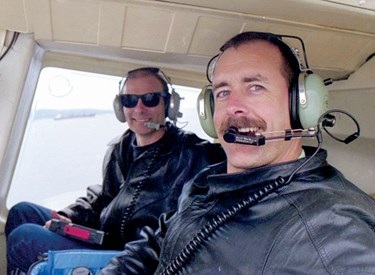
He participated in our late-night and 24-hour marathons before I drove out to the printers in Abbotsford. At this time we were using a simple device called a strip printer to set our headlines. It was just strips of negative with alphabets on them. The operator sat on a stool in the shower, the only place we could make dark, in a red light. Every time one pressed the trigger, a bright white light etched a new letter. The effect of the flashes and the claustrophobia of the shower made this one of the most unpopular jobs. Ellsworth survived and is in the publishing business, owner of Resource World mining magazine of Vancouver.
There were disasters galore as we grew. People came, people went. People came on red hot in sales, and then took to drink or otherwise fizzled out. A look on an applicant’s employment records might indicate they may have done that before. Who had the time or wisdom to look? I was flying mostly blind. I wasn’t choosy and couldn’t be.
There were painful moments. One of my ad salesmen, who I thought I knew, suicided horrendously. Another died of cancer. Many good people couldn’t take the chance of working for such a flaky upstart company.
The turnover was disheartening and it took a long time for the right people to get to the places they were needed in this rapidly growing little enterprise.
The newspaper was still unprofitable.
I removed the newspaper operations out of my house just as soon as we could, to the relief of the neighbours, to a little white wartime house at 1123 West 15th, just off Pemberton. That was quickly not big enough. A rented Fabco trailer doubled the floor space but was also soon overrun.
Our staff quickly grew. We had paste-up people, office help and salespeople who used drawing tables, desks and phones wherever they could. It was noisy and cramped. The owner of the little white house told me the building was going to be demolished after me and not to worry about damaging the interior.
We butchered together crude racks and tables, laid plywood in the lower attic and started keeping our back issues there, with about four feet of headroom.
The 40 or so hours before I drove to Abbotsford with the flats in my car were all about hard work and not much sleep. Lots of coffee. The newspaper was created from scratch. Copy had to be set. Photos had to be screened. Copy had to be proofed. Ads made up and placed.
It was soon obvious that we had to move again.
While prospecting in Dundarave I met with David Ingram, the owner of Cent-A tax services, and one of the most original and eccentric persons I have met over the years. Jovial, chatty David suggested that I consider moving the newspaper to share his office premises at 1139 Lonsdale Ave., but his space proved too small and the North Shore News rented part of the upstairs in the same building. It was a nice office on a floor dominated by a large central open-air atrium with lots of plants. The second floor was a warren of offices. The North Shore News rented a quarter of the space on the floor.
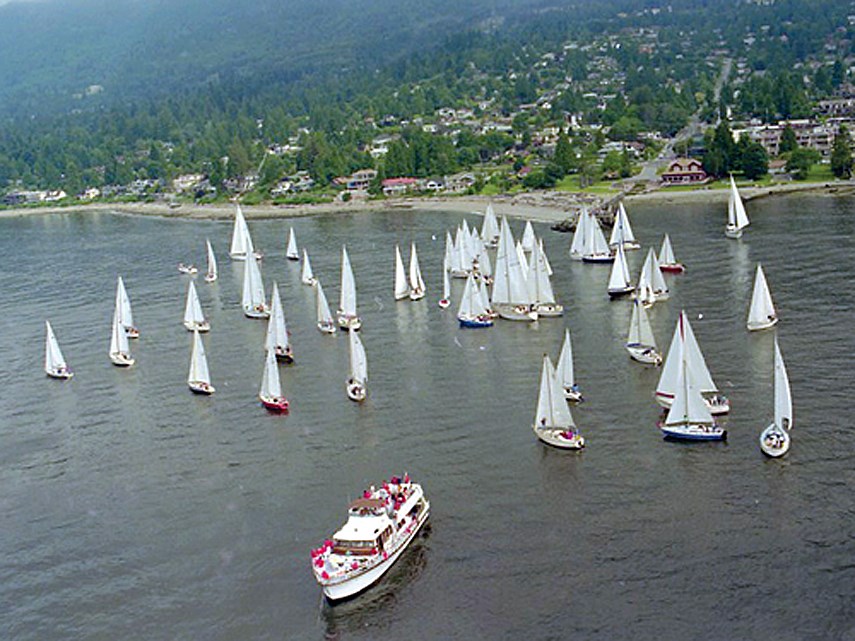
We kept growing. Other tenants on the floor eventually moved out. Brian Morse took North Shore Sailing School to Granville Island. The lease on the room for the answering service next to us lapsed and we took that over. That gave us the whole top floor. Linda Greenslade moved her Lonsdale salon out. Pacific Books didn’t renew. In the basement of the building, leased to CNCP Telex, technology caught up and they didn’t need the space any more. The News continued to burgeon into every new cranny in the building.
By then, David Ingram had moved his Cent-A operation out of the building. We were the sole tenant at last. We secured a happy lease with our landlord and invested half a million or so in a complete renovation of the building. We were on much better terms with the banks by then. Architect Chad Mooney was very helpful as well as Mario Szijarto, my longtime designer and friend.
Now, with sunlight flooding the floors, an organized lobby, and proper office arrangements for our differing departments we had a smoothly running one-location business at last. The ground floor of the building on Lonsdale was the lobby and classified and offices. Distribution occupied the new offices in the basement. We used the parking lot for distribution. Display advertising, photography, editorial, my office and secretary were on the second floor, but it really was the third floor up from the lane.
We finally plowed into the black about 1974-’75. By the time we started making money I owed the banks quite a bundle. It never really occurred to me that newspapers could make pretty good money once they were past the break-even point. A very kind volunteer, a management consultant, pointed that out to me, but I was so immersed in day-to-day struggles that it didn’t sink in. I understood what had to be done to improve things but lacked the will to do it – until I fell in love with boats, and one boat in particular. The boat was for sale for about $40,000, which was far beyond my banking restrictions. But it was a mystic time in my life.
Big things happened. Before, I thought if I raised my rates by 10 per cent all the advertisers would leave; and I couldn’t sell two more pages a week because I was already “selling” 19 or 20. After the first bloom of affection for the sailboat I was suddenly motivated. One of my realizations was that what I thought were my sales were really services of advertising already sold. I bit the bullet and gave the advertisers to my commissioned sales team, and concentrated my attentions on new clients.
The two new pages became four, and then six, and more. It was an exuberant time. After the struggles to get thus far, it began to be a lot more fun. Heady times. And nobody left when I raised the rates.
‘The Classies’
The classified ad department was a story in itself. Initially, way back near the beginning, we ran a half-page ad on our unsold back pages inviting people to use our free classifieds (thousands didn’t), until my banker of the day made it clear to me that he was not going to support my tenuous plan (“after people get to really like us, maybe they’ll buy classified ads”); and then bounced my personal paycheque as a bit of an attention-getter. I think I was trying to emulate the Buy and Sell, which ran free ads but depended on people buying the newspaper for revenue. I thank my banker now for pointing out that there was not much upside for a newspaper like ours that was free to start with, but at the time it seemed like another blow.
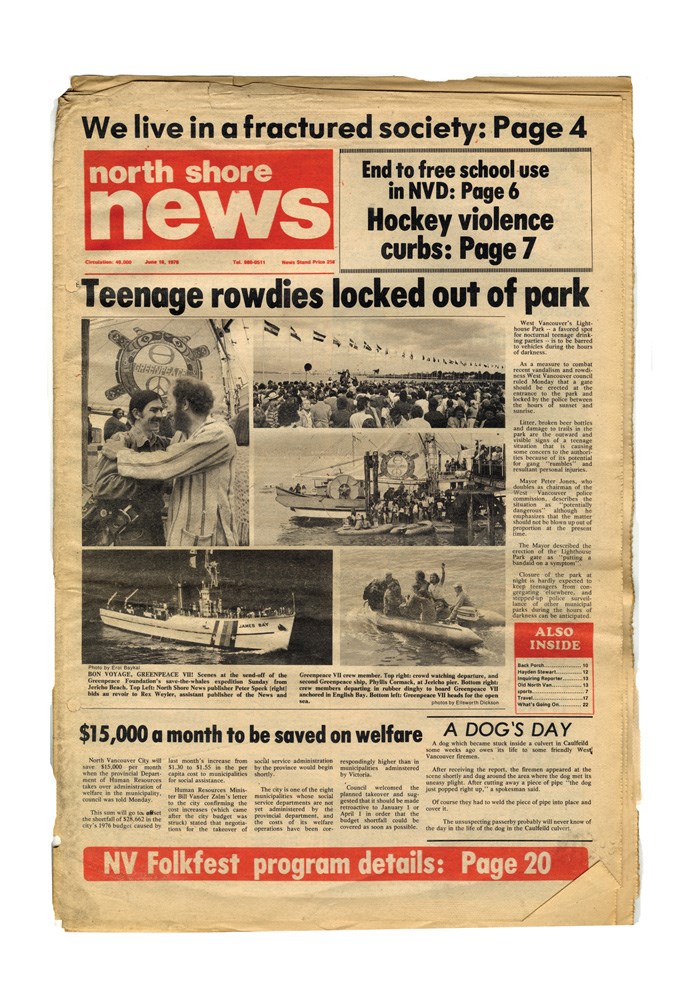
I came back from the bank with my tail between my legs and broke the news to my classified manager, expecting the worst. “Well, girls,” she said, “I guess we better get these phones hopping.” And to my great surprise, our paid advertising went from nothing to a page in the next issue, and we never looked back. Ah, those were the days.
Owning a newspaper, opined Norman Mailer, must be a bit like owning a goat, which you must feed every day, whether you feel like it or not, and that is the reality of the business of newspapering. Every page of news and reporting requires several pages of advertising to pay the bills. Armies march on their stomachs, said Napoleon. People-intensive businesses like newspapers also march on their stomachs. Payroll is a big number.
When the right person joined our little staff it felt like a bit more was taken off my daily grind.
I used to joke that I was publisher, editor and janitor, but as my load lessened there was a little more time to tinker, and the newspaper began to blossom editorially.
I even began to write a column, which usually got pecked out late at night. I wrote it perched on my bed with a portable typewriter on my knees. There was no time to research. I went with the flow. There is a newspaper joke that writing editorials is a bit like wetting yourself while wearing a dark suit. It feels nice and warm, and hardly anybody notices. I liked reading my own columns, but the goat was always hungry, and that last deadline soon became one more burden and I dropped the writing role.
Perfecting the pitch
Most of my days in the early years were spent making advertising sales calls – some planned, most cold called. I met many young through old people with small- or medium-size North Shore businesses and came to admire their hardiness. It’s tough to make a living on the North Shore. Rents are high, wages are higher and customers are choosy.
One of the rules of the sales business, that I learned the hard way, is that one never interrupts another salesperson who is making his pitch. You wait your turn, which is an opportunity to check the merchandise and formulate a pitch. One listens and watches customers and listens to staff while trying to design a way for the business to make more sales.
I sincerely told most prospects that I wanted the ads to make money for them, because then they would continue to use the North Shore News and know it cost them nothing; and urged them to make the News their voice at every North Shore door. One learns what would sell some merchandise for your prospect. One also listens to what’s going on if for no other reason than to find out when it’s a good time to become visible again, and one hears what customers have to say and how the other sales staff perform. One learns a lot.
Many small business owners and operators are not wealthy. They have payrolls and rent and taxes and also interest payments and a lot more. The first three expenses are all higher on the North Shore than they are elsewhere in the Lower Mainland. Payrolls are higher at a place where rents, taxes and values are sky high.
In the 50 years that the News has been active there have been massive changes in retailing. Box stores, internet shopping malls, category killers, Costco and Walmarts, all pretty well sprang into being over that. A great many small businesses and small chains disappeared. Franchises began to appear, a new avenue of escape for entrepreneurs.
Ever-changing media landscape
I was always ambitious, in an undisciplined sort of way. Looking back now I see a young man facing a pyramid of radiators and I’m grateful that the bankruptcy saved me from that. But I always wanted to escape. Because, for a lot of people like me, conventional employment didn’t work. Small business people aren’t always at their store or task because they want to be vendors. They want to escape too.
Some people just can’t stick to wage work. Some people can’t find jobs. Some people have beautiful dreams which they think the market wants. Franchisees make very few local decisions. Chains favour centralized flyer production and do not buy much ROP (newspaper advertising).
How the media world is going to look in a very short time is very interesting and alarming. The absence of many advertisers, who have moved to the latest thing, the internet, is forcing more and more restrictions on what traditional media can do in the way of investigation, reporting and effective dissemination of news and opinion. This is not just a newspaper concern. All media are suffering. Known and trusted names are disappearing as salaries are eliminated or frozen. Investigative reporting is rarer.
Mostly, I wonder what the mice are going to do, now that the cats are not able to look so hard. ◆
Peter Speck is the founder of the North Shore News. This story was included in our 50th Anniversary Issue, published Wednesday, Aug. 14, 2019. Click here for more stories from this special edition of the North Shore News.
